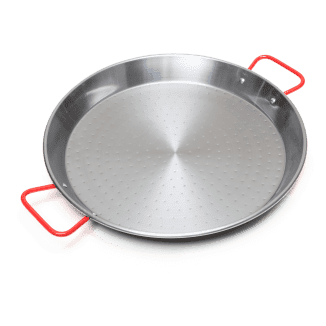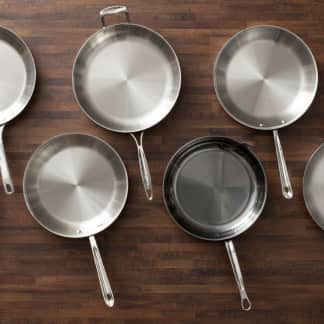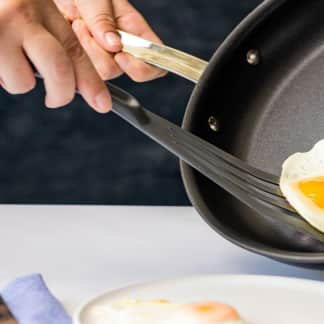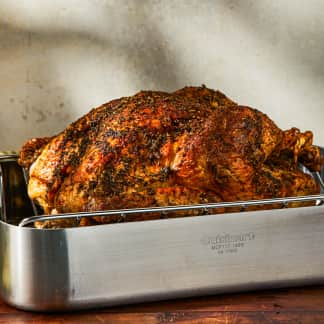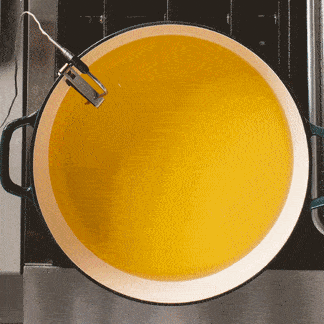In Spain, paella is traditionally cooked on the grill in a carbon-steel paellera. This pan’s shallow, wide shape maximizes the surface area of the paella, allowing for rapid evaporation of the cooking liquid and optimal socarrat (golden rice crust) development. We wanted to find the best paella pan for the home cook—a pan that would be easy to use and wouldn’t cost too much for this special-occasion dish. Further, it had to hold enough to feed six to eight people but still be small enough to fit comfortably on our winning gas grill and winning charcoal grill.
We determined that the best size was between 15 and 16 inches in diameter and ordered five pans in that range. While we included one stainless-steel pan in our lineup, the rest were made of the traditional carbon steel (including one enameled model). Carbon-steel pans usually require some seasoning and/or maintenance to prevent rusting; before testing, we followed the manufacturers’ instructions to prepare the pans for their first use. Methods varied, but none took longer than a half-hour to complete, and maintenance between uses took as few as 3 and no more than 13 minutes. (The enameled carbon-steel pan requires no seasoning or special upkeep.)

We used each pan to cook batches of our Paella on the Grill on both charcoal and gas grills; this recipe calls for careful observation and periodic rotating and moving of the pan around the grill for even cooking. We were happy to find that the grilling didn’t damage any of the pans. Better still, they all proved capable of turning out nicely cooked paella. Some, however, required extra attention and more rotating and moving. In general, the thinner the pan, the more quickly it will heat and cool and the more directly it will reproduce any hot or cool spots in your fire. Your paella will cook faster, and you’ll need to be vigilant (and rotate the pan more frequently) to keep the heat even and ensure that the socarrat doesn’t scorch. This is especially true of thin pans with dark finishes, which absorb and radiate more heat than lighter-colored ones.

Our winner, the Matfer Bourgeat Black Steel Paella Pan, was the thickest and heaviest pan we tested. As a result, it took the longest to heat up—but once it was hot, it stayed evenly hot across the pan and thus required less manipulation to produce paella that was consistently cooked from edge to edge. When we did need to rotate the pan, it was easy, as the handles rose above the lip of the pan; other pans had handles that extended horizontally, bumping into the sides of the grill and bringing our knuckles too close to the fire.

Yes, you’ll need to put a little extra work into preparing and maintaining this carbon-steel pan, but once you do, it’ll be practically nonstick. And that heavy-duty construction gives this pan versatility: We had great success using it to make our indoor Paella recipe (which goes from stovetop to oven), but it’d be just as good serving as a roasting pan or a griddle.
The Tests
- Make one batch of our Paella on the Grill on a gas grill
- Make one batch of our Paella on the Grill on a charcoal grill
- Make one batch of stovetop-to-oven paella with the winning pan
How We Rated
- Performance: We used each pan to make two batches of our Paella on the Grill. We gave more points to pans that retained even heat (with minimal manipulation on the grill), cooked the paella uniformly, and produced lots of evenly browned socarrat.
- Ease of Use: We preferred vertical handles that made it easy to rotate the pans without bumping into the sides of the grill and that kept our hands safely above the heat.
- Care: Pans that were easy to clean and maintain and that required no initial preparation out of the box received more points.
- Thicker, heavier carbon steel
- Vertical handles






